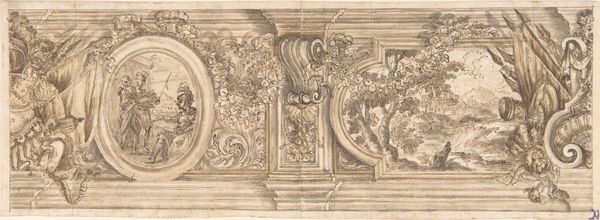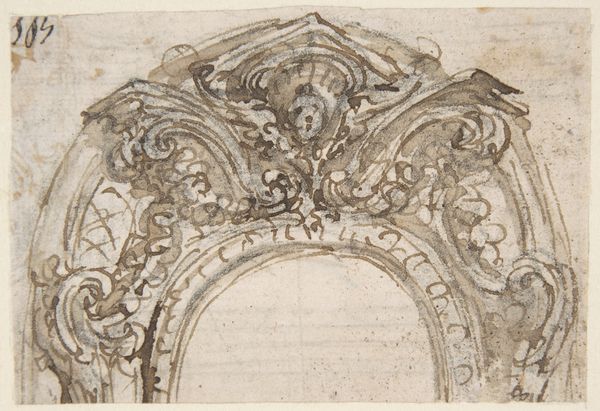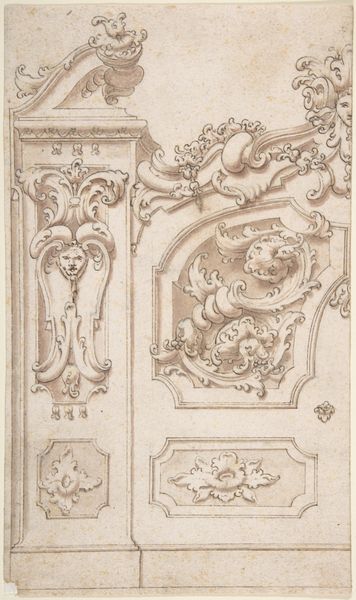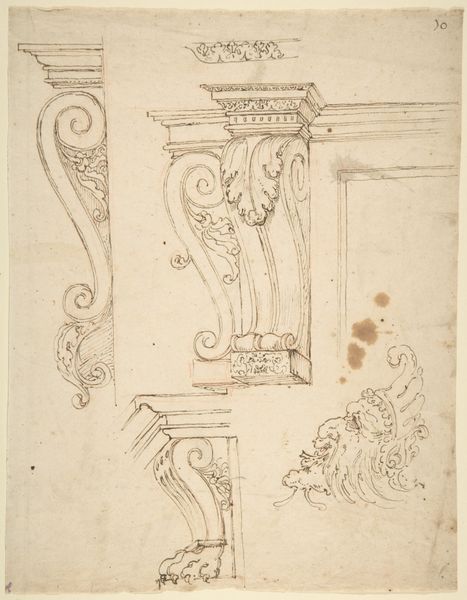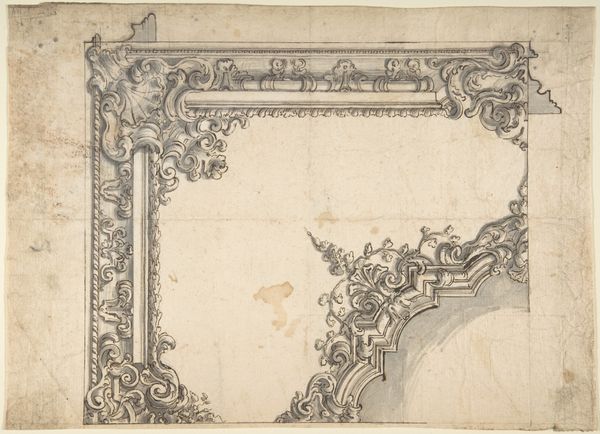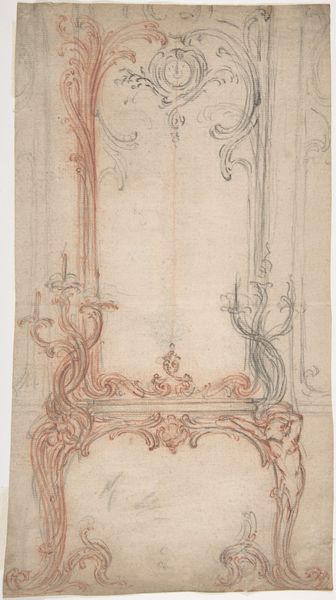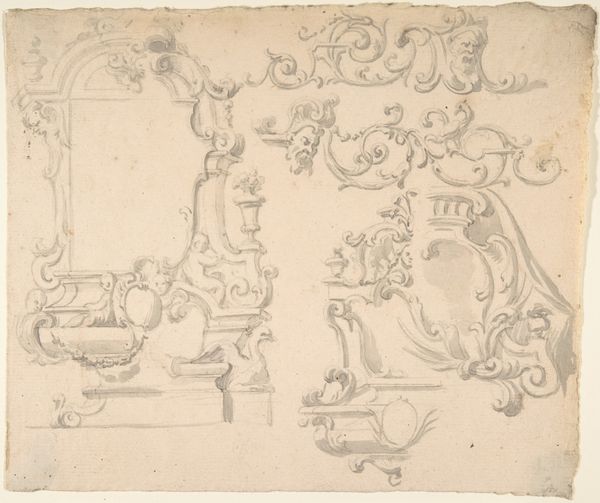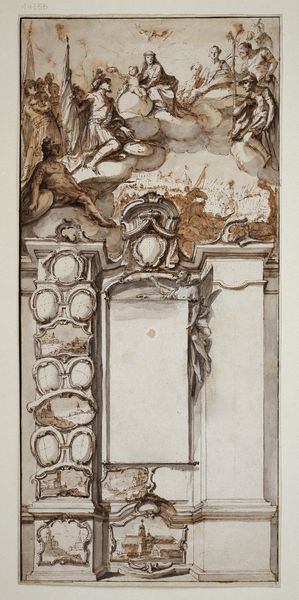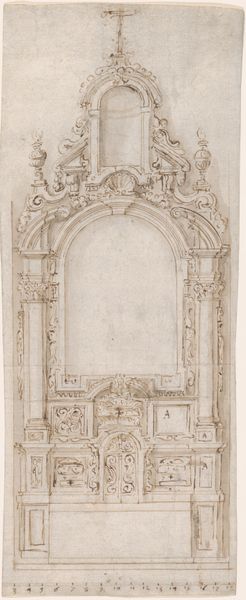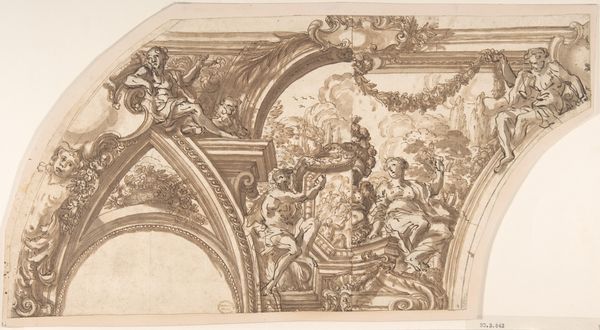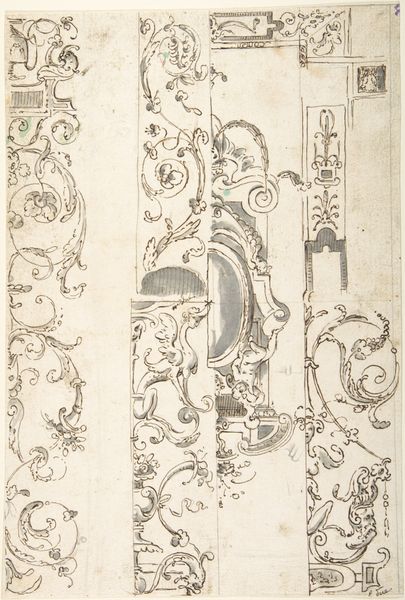
drawing, print, paper, pencil
#
drawing
# print
#
paper
#
form
#
11_renaissance
#
geometric
#
pencil
#
history-painting
Dimensions: 5-1/6 x 8-7/16 in. (13.1 x 21.4 cm)
Copyright: Public Domain
Curator: Looking at this delicate drawing, my first impression is how dreamlike it seems. The wispy lines and fantastical creatures evoke a world just beyond our own. Editor: Well, let's anchor this vision. What we have here is a drawing called "Design for an Architectural Frieze," likely created sometime between 1600 and 1700. The work is attributed to an anonymous artist and is rendered in pencil, print and paper. Curator: "Frieze" is the key word, I think. It speaks to the integration of mythology and power. See the repeating motifs—the stylized flora and what appears to be a leonine griffin? These aren't just decorative; they’re loaded symbols meant to convey a sense of lineage and authority. Editor: Exactly! Friezes often served a very public function, adorning buildings that housed political or social institutions. The symbols would have resonated with the people who saw them daily, reinforcing a specific worldview. The use of classical motifs tells me that there's likely an allusion to an imperial precedent happening here. Curator: Consider also the tension between the geometric framework and the organic, almost chaotic ornamentation. It's as though the architects are attempting to impose order on the uncontrollable forces of nature, channeling them into a narrative. That vase overflowing with vegetal forms in the center -- that has a symbolic heft. Editor: Right, this piece can offer insight into period aspirations, its design vocabulary, and its place within its larger environment. How buildings aimed to express a city's aspirations. In fact, its graphic nature gives us insights on both form and history painting--and all within a single visual expression. Curator: It makes you consider the stories such a frieze would have told if realized, doesn’t it? And, how those stories were intended to mold public opinion. Editor: Absolutely. The "Design for an Architectural Frieze" showcases a blend of history, identity, and artistry of the era, but perhaps, the truly fascinating question resides less with what we're actually viewing--but where these symbolic forms are taking us and how we choose to apply their symbolic potential to our contemporary realities. Curator: A powerful reminder of how visual language can both reflect and shape our cultural understanding. Editor: Indeed. Art as social discourse and an on-going dialogue of power.
Comments
No comments
Be the first to comment and join the conversation on the ultimate creative platform.
